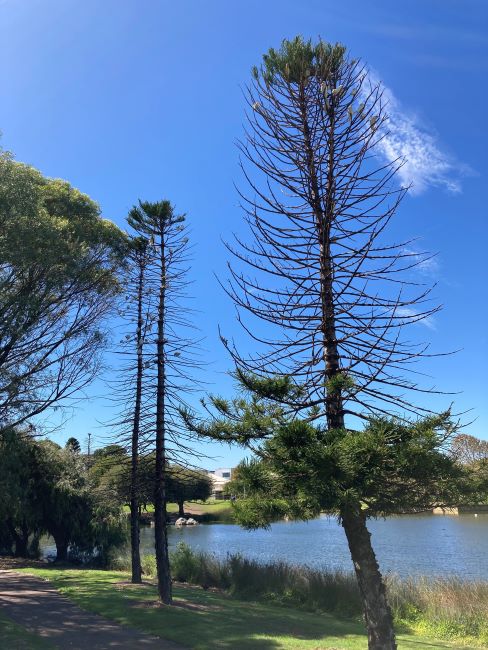Corella control
 The City of Rockingham, like many other local governments from Geraldton to Busselton, has an increasing problem with two species of pest corella – the little corella (Cacatua sanguinea)native to the Pilbara and Kimberley region of Western Australia, and the Eastern long-billed corella (Cacatua tenuirostris), an introduced species from eastern Australia.
The City of Rockingham, like many other local governments from Geraldton to Busselton, has an increasing problem with two species of pest corella – the little corella (Cacatua sanguinea)native to the Pilbara and Kimberley region of Western Australia, and the Eastern long-billed corella (Cacatua tenuirostris), an introduced species from eastern Australia.
The number of corellas within the City’s boundaries has rapidly increased in recent years and the birds are now causing:
- significant environmental damage to the City’s tree canopy
- ongoing damage to other public and private assets and infrastructure (requiring high ongoing maintenance costs)
- diminished amenity in public spaces through ongoing fouling creating public health issues
- habitat pressure on the threatened black cockatoos and other birdlife.
Since 2014 the City has been undertaking a corella control program to reduce the impact of these invasive and highly damaging pest species. The program is conducted in accordance with the Biodiversity Conservation Act 2016 (BC Act) and Biodiversity Conservation Regulations 2018.
The two main components of the program are:
Roost culling
Both pest species are listed as ‘Managed Fauna’ under the BC Act. As such, they are permitted to be culled via firearm. The City uses qualified and experienced pest management technicians to undertake the culling of corellas in trees where the birds are roosting in high numbers.
Trapping
This is managed under a Licence to Take Fauna Causing Damage issued by the Department of Biodiversity, Conservation and Attractions (DBCA).
Feeder stations containing sunflower seed and wheat have been placed in several locations where the birds congregate in large numbers. The feeding stations will attract corellas for trapping.
- No poison is used.
- Birds are netted and humanely euthanased in accordance with the DBCA licence.
The City acknowledges that culling of any wildlife is potentially distressing to some people. Unfortunately it is a measure of last resort which must be taken to protect the greater environment, to minimise the damage these species are causing throughout the community, and to reduce the pest corella population to levels that are determined to be ecologically sustainable.